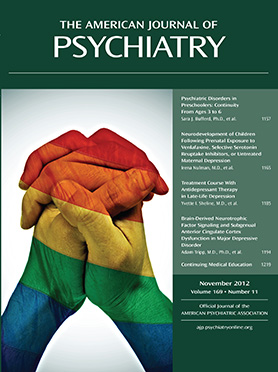Psychiatric Disorders in Preschoolers: Continuity From Ages 3 to 6
Abstract
Objective
Recent studies indicate that many preschoolers meet diagnostic criteria for psychiatric disorders. However, data on the continuity of these diagnoses are limited, particularly from studies examining a broad range of disorders in community samples. Such studies are necessary to elucidate the validity and clinical significance of psychiatric diagnoses in young children. The authors examined the continuity of specific psychiatric disorders in a large community sample of preschoolers from the preschool period (age 3) to the beginning of the school-age period (age 6).
Method
Eligible families with a 3-year child were recruited from the community through commercial mailing lists. For 462 children, the child’s primary caretaker was interviewed at baseline and again when the child was age 6, using the parent-report Preschool Age Psychiatric Assessment, a comprehensive diagnostic interview. The authors examined the continuity of DSM-IV diagnoses from ages 3 to 6.
Results
Three-month rates of disorders were relatively stable from age 3 to age 6. Children who met criteria for any diagnosis at age 3 were nearly five times as likely as the others to meet criteria for a diagnosis at age 6. There was significant homotypic continuity from age 3 to age 6 for anxiety, attention deficit hyperactivity disorder (ADHD), and oppositional defiant disorder, and heterotypic continuity between depression and anxiety, between anxiety and oppositional defiant disorder, and between ADHD and oppositional defiant disorder.
Conclusions
These results indicate that preschool psychiatric disorders are moderately stable, with rates of disorders and patterns of homotypic and heterotypic continuity similar to those observed in samples of older children.



